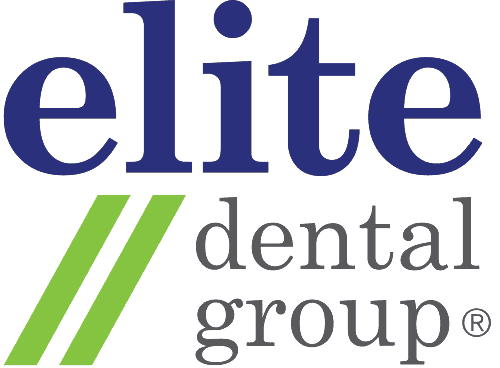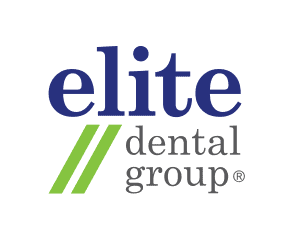31 Jan Dental Veneers vs Braces vs Clear Aligners
Introduction
There are many ways to obtain straighter and better teeth.
As a dentist who focuses on cosmetic dentistry, I have encountered patients who believe that braces and clear aligners are the only options for correcting their teeth alignment and smile. This is not true. There are other alternatives that can help align your teeth depending on your current dental condition and the complexity of alignment needed.
If you are looking for a suitable teeth straightening alternative or simply want to find out more before making a decision, this guide will help you understand the differences and pros and cons of dental veneers, braces and clear aligners better.
It is my hope that this guide for dental veneers vs braces vs clear aligners will help you with the following:
- Give you a clear understanding of the difference between veneers, braces and aligners;
- Make the right treatment decision by comparing the available options and factors;
- Achieve your desired cosmetic results that you are looking for.
Dental veneers
Dental veneers are one of the fastest ways to achieve a perfect smile. Veneers are able to conceal misshapen teeth, cracks and chips that might affect your smile.
Many couples who are prepping for their wedding and want to look their best, have come to me seeking dental veneer treatment. Dental veneers are a popular option for many mid-career job seekers and couples who are looking for a makeover pre-wedding as it can transform your smile and change your overall appearance non-surgically.
There are, however, some considerations before you proceed with treatment.
Alignment of Teeth – How straight are your teeth?
Dental veneers work best on fairly straight teeth. If you have severely misaligned teeth, it might be necessary to undergo a course of braces or clear aligners treatment before application of dental veneers. This is because misaligned teeth can affect the ability to create ideal aesthetics and compromise long term success because of bite interferences. Crooked teeth also usually require more aggressive tooth preparation to accommodate the ceramics.
Bruxism – Do you grind your teeth?
Patients who suffer from bruxism (teeth grinding) will tend to have a higher failure rate of dental veneers. The pressure of teeth grinding can damage your veneers and cause fractures and chipping. Patients who have a nail biting habit might also want to consider other forms of cosmetic dental procedures over dental veneers if you are unable to break the habit.
If you are a bruxer or simply have a habit of chewing your nails or using your teeth as a tool, it is possible that replacement veneers are needed within a few years of application.
Dental Hygiene – Do you suffer from tooth decay and gum disease (gingivitis)?
If you have poor dental hygiene that has resulted in dental caries and gum disease (gingivitis), you will be asked to hold off dental veneers treatment to work on your overall dental health first.
Ignoring dental health to place dental veneers will further compromise your teeth and deteriorate the condition of your gums. Doing so can be likened to drilling and nailing a poster up on a patch of rotting wall. While it might enhance the appearance of the wall, if the underlying structural issues are not addressed these will only continue to worsen in the long run.
Furthermore, inflamed bleeding gums will make placement of the veneers extremely difficult.
A dentist who truly cares about your oral health and well-being will ensure that your oral hygiene is optimal before recommending dental veneers.
Consumption Habits – Are you a heavy coffee drinker or smoker?
Depending on whether you are a habitual coffee drinker or smoker, you might need to make a decision between doing composite and porcelain veneers based on your consumption habits.
Composite veneers can last an average of 3-5 years. Frequently, composite veneers are replaced when the material wears or picks up dietary stains.
Should you have certain dietary habits, your dentist might recommend porcelain veneers instead of composite veneers which are more stain resistant. Porcelain veneers also have a longevity of more than 10 years with proper care and maintenance.
Before you write off dental veneers as one of the possible treatment options to achieve your desired smile, one of the biggest advantages of dental veneers is speed. It is possible for dental veneers to be fitted within weeks. This is in comparison to treatments like braces or clear aligners that usually take months to years.
| Dental Veneers | |
| Pros | Cons |
| More stain resistant than tooth enamel | Can be expensive |
| Natural looking | Needs regular maintenance |
| Can be shaped to your desired outcome | Has a lifespan dependent on level of care |
Braces
Braces are one of the most popular cosmetic dentistry treatments.
From experience, the best time to seek braces treatment is between the ages of 10-14 as preteens and younger teens have all or nearly all their adult teeth in place. The softer jawbone tissue also means that it is easier for the teeth to be moved.
If you are an adult seeking orthodontic help, you might be hesitant about wearing braces. This can stem from aesthetic concerns or the fear of pain and discomfort from the shifting of teeth. It is important to note that there really is nothing to worry about!
In the case of complex dental cases, braces are the most effective and efficient at shifting teeth compared to clear aligners like Invisalign,. An experienced dentist or orthodontist will be able to guide you through the entire process to ensure that it is as seamless as possible.
If aesthetics are the primary concern and you choose to go with clear aligners like Invisalign, Zenyum or ClearCorrect by Straumann, you should be aware that the final outcome might take a longer duration and might not be as good as wearing braces. This is because aligners cannot do the same ‘heavy lifting’ as braces can.
When you undergo braces treatment, you are treating more than an aesthetic issue. Braces can effectively fix malocclusion (bite) or jaw problems, crooked teeth, and overcrowding. Fixing problems like the ones mentioned reduce the risks of decay and tooth loss. The average duration of fixing teeth with braces takes about 12-24 months. However, if the key issue is cosmetic related, it may take as little as six months.
Should you decide to take up braces treatment, there are a number of options that you can pick from:
Metal Braces
Metal braces are the most common and affordable option. Besides being cost-friendly, it is also the most effective and durable option for patients with complex dental problems. Metal braces can help expedite treatment times, which makes it a popular choice for many patients.
Lingual Braces
Lingual braces are a more discreet option to conventional braces. They are braces that are worn on the inner-facing surfaces of the teeth. This makes it less visible to anyone, especially from a distance. One drawback of lingual braces are the costs. There are additional costs as the lingual brackets are made individually to fit the contours of the back of the teeth. You will also require additional check-ups to ensure that the braces are properly aligned to the shifts in teeth movement. Patients tend to have more speech difficulties with lingual braces. Ulcers or cuts to the tongue are very common with lingual braces.
Due to the specialized nature of the equipment required, I usually refer patients seeking lingual braces to orthodontic specialists.
Ceramic Braces
Ceramic braces are a popular option for many adults seeking orthodontics who shy away from metal braces for aesthetic reasons. This form of braces are tooth-coloured, less noticeable than metal braces and have a price point that sits between that of metal braces and lingual braces.
| Braces | |
| Pros | Cons |
| Able to shift complex dental conditions | Not aesthetic |
| Reliable teeth straightening option | Can be uncomfortable at first |
| Can expedite teeth straightening process | Difficult to clean |
Clear aligners
For patients who are looking for a more discreet and less visible alternative to braces, clear aligners will be right up your alley. Besides its transparent appearance, clear aligners are also removable.
Some popular brands of clear aligners include Invisalign, Zenyum and ClearCorrect by Straumann. At Elite Dental Group, our preferred clear aligner brand is Invisalign due to its track record, the flexibility of treatment and the customisation to cater to the individual patient.
Invisalign appeals to adults as they are more aesthetic compared to fixed braces. My adult patients are able to attend work or Zoom meetings with their colleagues without anyone noticing the clear thin plastic of the aligners. This is a huge perk for them.
While aligners are not suitable for complex orthodontic cases, under an experienced dentist or specialist, they work well to improve smiles. Your dentist might combine the use of braces and clear aligners for a more well-rounded treatment plan. Some clinicians use clear aligners to straighten crooked teeth, braces to correct the bite, then whitening or veneers to improve the appearance of the front teeth.
The aligners are changed every fortnight to shift your teeth into place. This means that you will only be able to see results in months rather than in weeks like dental veneers. Should your orthodontic case be more complex, you might be recommended by your dentist or orthodontist to consider braces for optimal results.
| Clear Aligners | |
| Pros | Cons |
| Invisible | Can be more costly than veneers or braces |
| Convenient to clean and remove | Has a longer treatment duration |
| Comfortable | Not recommended for severely crooked and misaligned teeth |
Dental Veneers vs Braces vs Clear Aligners
To give a brief overview on the various alternatives available in Singapore, I have created a table briefly comparing veneers, braces and Invisalign (clear aligners) options based on:
- The level of complexity that each can treat;
- The cost of receiving treatment at Elite Dental Group,
- The average duration of treatment; and
- The average longevity of treatment.
Do take note that this is simply a reference and might not be entirely accurate for your case. The needs and requirements of every single patient are different and treatment duration and costs will vary accordingly. Your dentist might also suggest a combination of treatments to achieve your desired outcome, which can affect overall treatment duration and costs.
To have an accurate treatment quote, I highly recommend visiting your dentist or an orthodontist for an orthodontic assessment.
| Treatment | Level of Complexity | Cost at Elite Dental Group | Av/ Duration | Av/ Longevity |
| Composite Veneers | Mild to Moderate | $800 per tooth | 2-4 weeks | 3 – 5 years |
| Ceramic Veneers | Mild to Moderate | $1,500 per tooth | 4-8 weeks | 8 – 10 years |
| Metal Braces | All levels | $3,100 – $5,000 | 9 – 36 months | Lifetime |
| Ceramic Braces | Mild to Complex | $4,100 – $5,800 | 9 – 36 months | Lifetime |
| Invisalign Express | Mild | $4,500-5,800 | 14-28 weeks | Lifetime |
| Invisalign Lite | Mild | $6,000 – $8,000 | 7-14 months | Lifetime |
| Invisalign Full | Mild to Moderate | $8,000 – $12,000 | 24 months onwards | Lifetime |
Factors for Consideration
Besides understanding what each treatment entails, here are some common factors for consideration that can help you make a clearer decision:
- Cost of treatment
- Speed of treatment
- Duration and length of treatment
- Time commitment for treatment
- Future treatment required
Financing Cost of Treatment
Changing your smile and the look of your teeth is not cheap, especially when treatment is done with an experienced dentist or orthodontist. There is no cheap fix if you are looking for an option that will last the length of a special event or even the rest of your lifetime.
The overall cost will depend on your current dental condition and your treatment goals. If you are covered by insurance, it might be possible to claim part of the cost of your dental or orthodontic treatment with dental insurance.
What can I do to straighten my teeth quickly?
If you are looking to straighten your teeth quickly, here are some options that might interest you:
- Braces
- Aligners
- Dental veneers
Ultimately, how fast your teeth can be straightened is not just dependent on the type of treatment administered but also on the current condition of your teeth and your oral health.
To get a more accurate assessment of how fast it will take to straighten your teeth, seek the help of your dentist or orthodontist. They will be able to create a treatment plan for you with a tentative date of completion.
Are dental veneers or braces or aligners better for me?
The quick answer to this is to ask yourself what outcome you would like to achieve. Dental veneers are better for you if you have a particular smile in mind and wish to skip braces or clear aligner treatment.
Here are five elements that make a beautiful smile:
- Position of your teeth – whether it is straight or crooked
- Shape of your teeth – whether it is too short, too long, too narrow, or uneven
- Colour of your teeth – whether it is too dark, black or off-white
- Proportion – are your teeth in a pleasing visual proportion, and are the gums in proportion
- Symmetry – is there a slant or asymmetry
Is it cheaper to get dental veneers or braces?
The answer to this question is highly dependent on your current dental condition. Dental veneers usually cost about $800 per tooth for composite veneers and $1,500 per tooth for ceramic veneers, while braces range from $3,100 – $5,800.
Why get dental veneers instead of braces or aligners?
Dental veneers are a great way to look like you have straightened your teeth without going through the time intensive process of actually straightening your teeth with braces or aligners. Should you have fairly straight teeth with good oral hygiene, you will be a good candidate for dental veneers since issues with tooth size and shape cannot be corrected with alignment.
Conclusion
Getting your teeth straightened can be an exciting process. I take a lot of pride and joy in watching the appearance of my patients’ lives change for the better after completing treatment. Should you be considering dental veneers, braces or clear aligners, it is important that you have all the facts available to determine the best course of treatment for you.
If you would like to know more about the difference between dental veneers, braces and clear aligners and whether you are suitable for treatment, I would like to invite you to submit an enquiry to one of our Patient Experience Specialists on our website or make an appointment with me for an initial assessment at +65 6333 4456 or our 24/7 WhatsApp hotline at +65 9788 9407.
Author
Dr Jaclyn Toh is a dentist with an interest in dental veneers and biomimetic dentistry. She has more than 10 years of experience providing ethical restorative dentistry that aims to restore the original function and appearance of natural teeth. In her daily practice, Dr Jaclyn works on complex root canal treatment cases and provides smile makeovers for couples who are looking to reinvent their smiles before their wedding.




